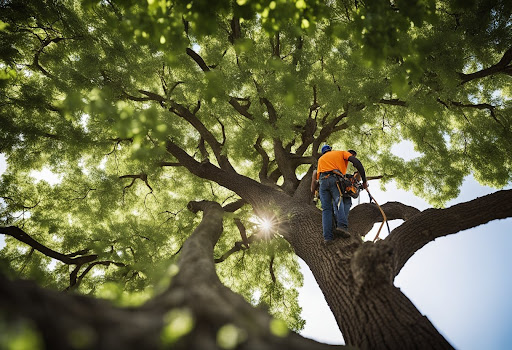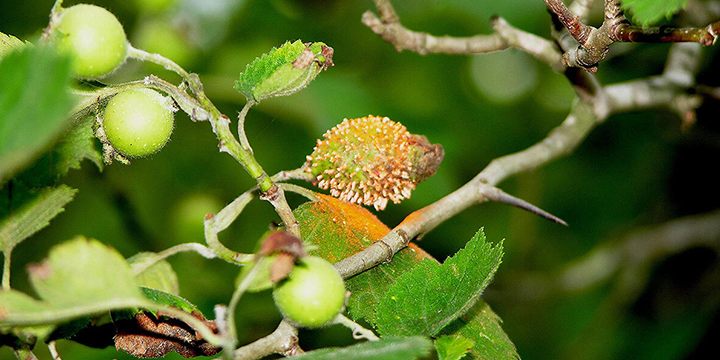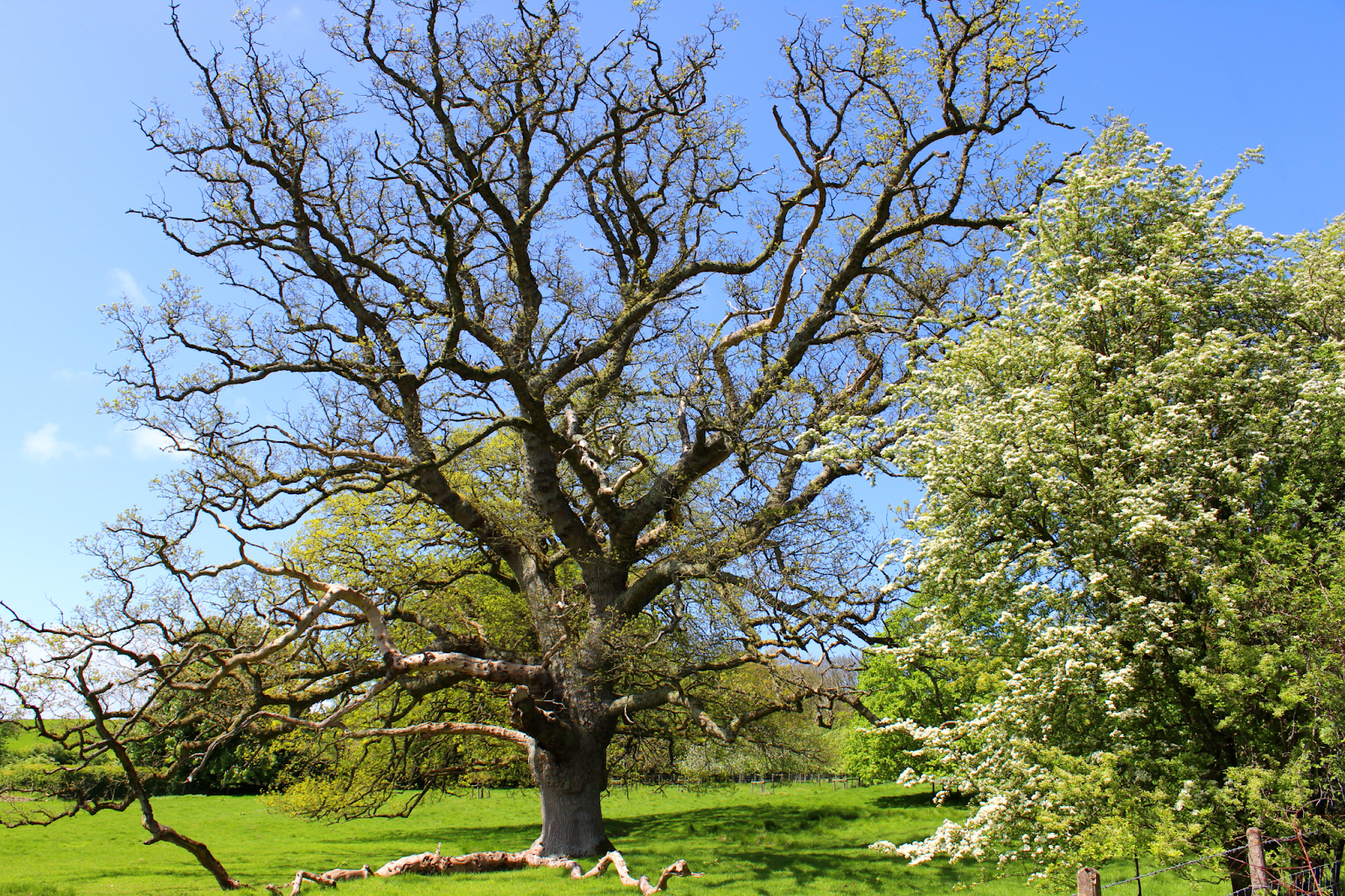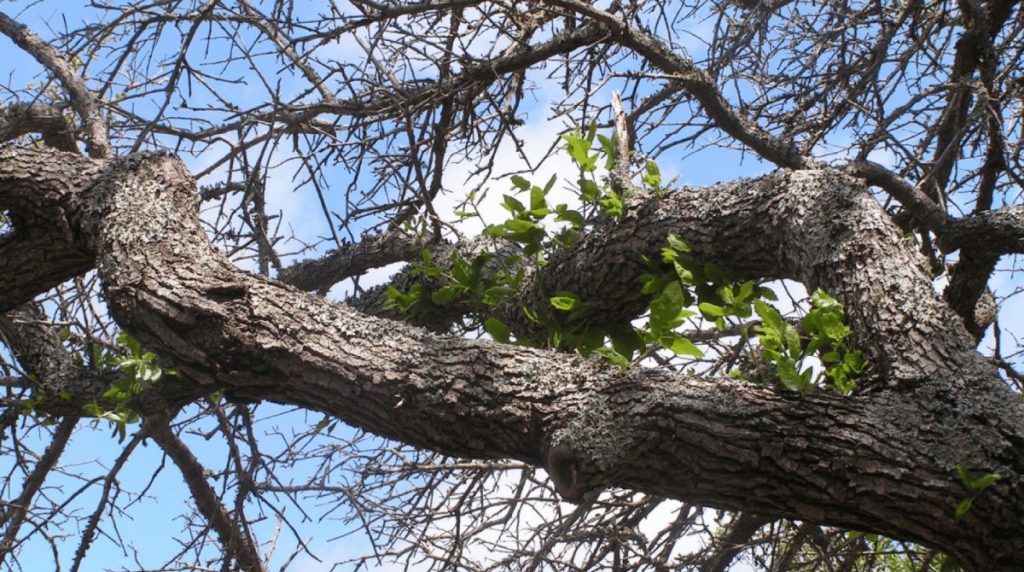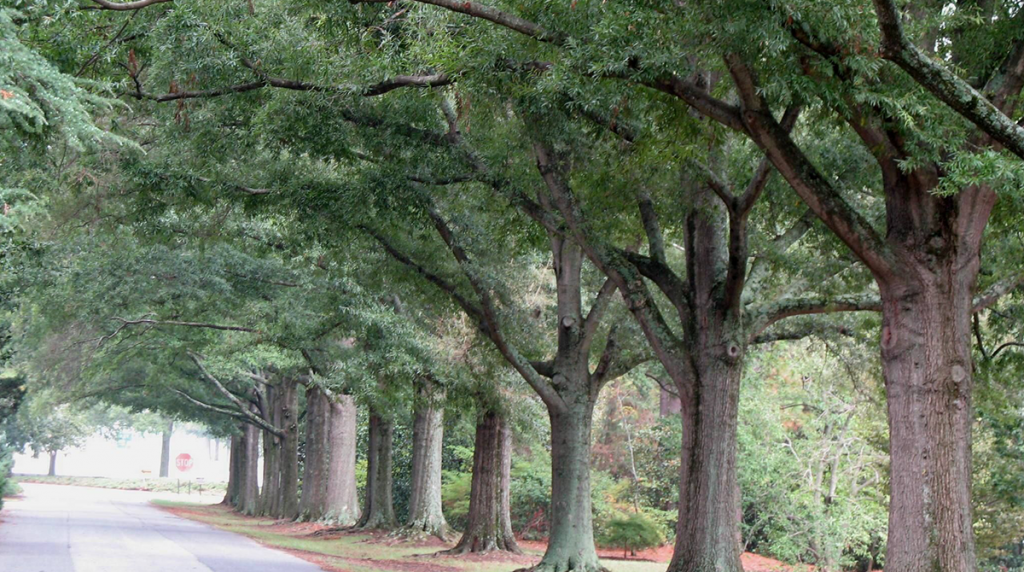
Date January 27, 2021
Category
If you take a walk through a park in North Central Texas, you’re very likely to run across a Willow Oaktree or two. They are some of the most popular shade trees in our area, prized for their elegant forms and round, robust crowns. Their hardy, adaptable nature makes them a wonderful addition to any yard. If you’re the proud owner of a Willow Oaktree, consider yourself lucky. If you’re thinking about planting one on your property, here are some things you should know about caring for Willow Oak trees.
About Willow Oak trees
Don’t be confused by the name. Willow Oak trees are all oak and no willow. They are closely related to Red Oaks, although they do not have the notable lobed leaves of Red Oaks. Instead, they have glossy, slender leaves similar to Willow leaves. Like other oaks, they produce acorns, which the neighborhood wildlife enjoy, but these acorns are small and take two years to mature. Throughout the southern United States, Willow Oaks are found in marshy floodplains near streams, but they can tolerate drought once they’ve become established. Most Willow Oaks reach approximately 60 feet, although they can grow as tall as 75 to 80 feet in perfect conditions. These trees require full sun to grow strong and healthy. The partial sun will weaken the Willow Oak’s structure because the branches will grow lopsided in their attempt to reach the sun.
Tree nutrition for Willow Oaks
Tree nutrition is essential to the long-term health of your trees. Trees get nutrition through the soil, so ensuring your Willow Oaktree has the proper nutrition available will ensure its continued health, growth, strength, and vitality. Willow Oaks can tolerate poorly drained soil and drought conditions, which makes them extremely versatile trees. However, they do require acid soil to thrive. They need a pH of 6 or less and will suffer in high pH soils. You can do a soil test to check your soil’s acidity and determine if you need to amend it. Start by contacting your local Cooperative Extension Services office for instructions and sample bags, or you can pick up a DIY kit from most nurseries. Keep in mind that the DIY kits are not quite as extensive. If you have questions about tree nutrition or soil amendments, you should consider working with a certified tree expert. One of our ISA Certified Arborists would be happy to answer questions or help with your tree care needs.
Pruning and trimming of Willow Oak trees
Willow Oak trees grow in a pyramidal shape when they’re young, but they later develop a rounded canopy. Willow Oaks take longer than average to heal from pruning, so most structural pruning should occur early in the tree’s life to train its growth. Once your Willow Oak reaches maturity, you should prune and trim your Willow Oak to remove low-grade, dead, or diseased branches. If you have questions or concerns about pruning your Willow Oak, please reach out to our staff.
Common issues for Willow Oak
All trees come with a unique list of potential problem areas. Some trees are more prone to certain diseases or insect infestation and, although they’re widely considered low-maintenance trees, Willow Oaks are not an exception to this rule. Here are some common issues to look for in your Willow Oaktree:
- Leaf Spots — If you notice some leaves on your Willow Oak have brown, dead areas around the leaf’s margins or spotty holes along the surface, chances are your Willow Oak has a leaf spot disease. The most common leaf spot disease among Oak trees is Oak Anthracnose. Proper water, mulching, and drainage help prevent this disease.
- Shoestring Root Rot — This disease is also prevalent among oaks. Look for signs like stunted or yellowed leaves or white, fuzzy fungus between the bark and the tree. Call a certified arborist right away if you notice these signs. A tree that’s only slightly affected can be saved with the correct tools and techniques. However, a severely affected tree will need to be removed.
- Powdery Mildew — Powdery mildew is what it sounds like: white or gray patches that typically appear on the top side of leaves. These patches can sometimes appear on the underside of leaves or the stems, buds, blossoms, or fruits. Powdery Mildew can usually be prevented or controlled by trimming crowded areas and infected leaves.
- Other — There are a few other things worth mentioning. Like other oaks, Willow Oak is susceptible to Oak Wilt, Chestnut Blight, and other cankers and blisters. Maintaining a healthy tree will help avoid these issues.
TreeNewal is here for you.
If you have a Willow Oaktree or plan to plant one and have questions about how to care for it, give TreeNew a call. We have three ISA Certified Arborists and a team of highly qualified tree care experts on our staff. We offer expert tree services such as tree planting, tree nutrition, tree trimming and pruning, disease management, insect management, and tree removal services. Call us today at tel:(817) 592-6846 for more information. One of our experts can answer any questions you may have or make a visit to your property to address more serious concerns.
To learn more about How to Care for a Willow Oak Tree, call our Argyle and Southlake-based teams at tel:(817) 592-6846 or send us a message.
We’re a little different than the average tree services company.
Learn more about TreeNewal’s ISA Certified Arborists!
Our Dallas/Fort Worth-based tree doctors can explain how sustainable tree care services add more value to your bottom line.
Healthy trees, healthy lives.
